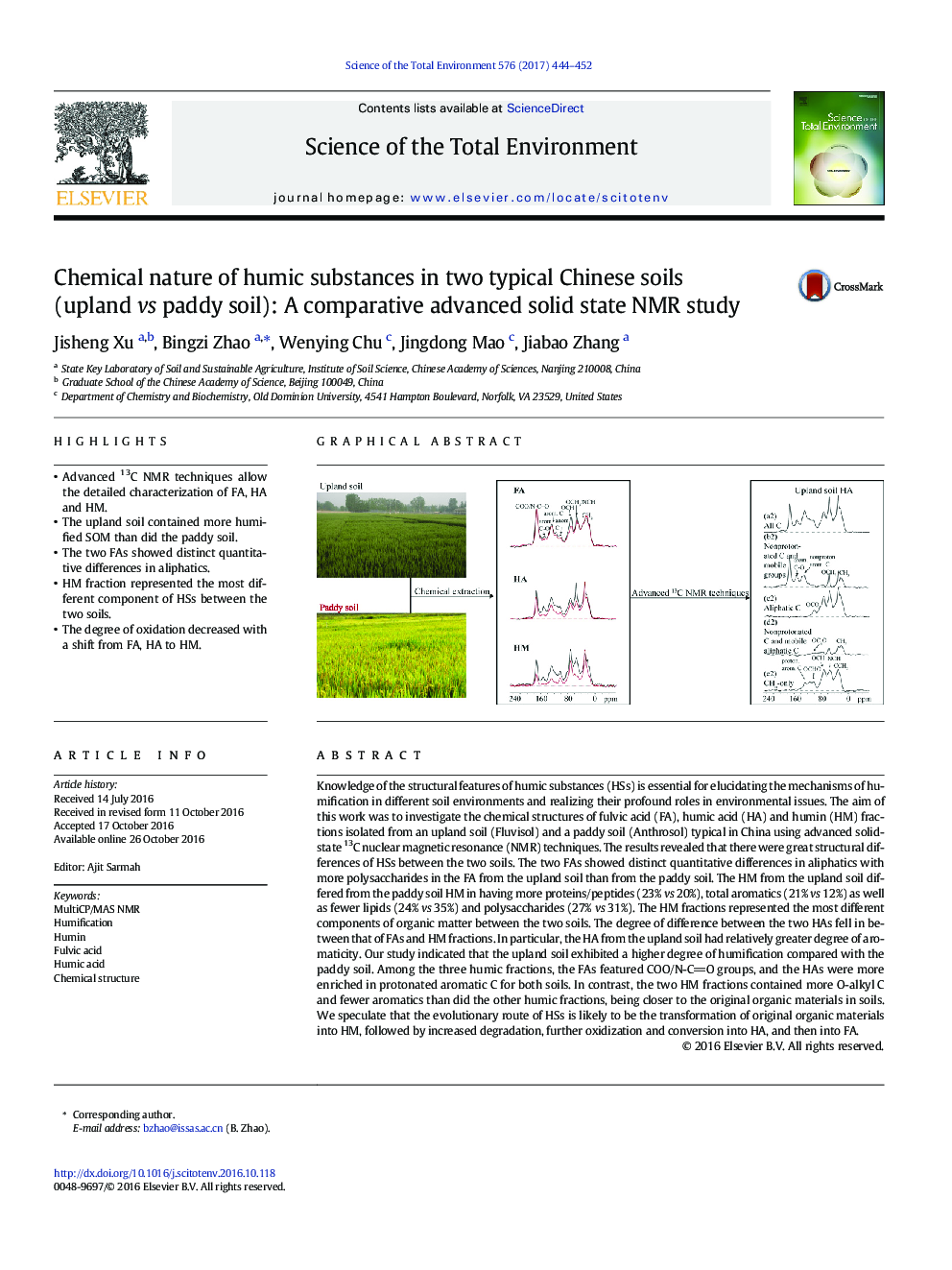| کد مقاله | کد نشریه | سال انتشار | مقاله انگلیسی | نسخه تمام متن |
|---|---|---|---|---|
| 5751987 | 1619715 | 2017 | 9 صفحه PDF | دانلود رایگان |

- Advanced 13C NMR techniques allow the detailed characterization of FA, HA and HM.
- The upland soil contained more humified SOM than did the paddy soil.
- The two FAs showed distinct quantitative differences in aliphatics.
- HM fraction represented the most different component of HSs between the two soils.
- The degree of oxidation decreased with a shift from FA, HA to HM.
Knowledge of the structural features of humic substances (HSs) is essential for elucidating the mechanisms of humification in different soil environments and realizing their profound roles in environmental issues. The aim of this work was to investigate the chemical structures of fulvic acid (FA), humic acid (HA) and humin (HM) fractions isolated from an upland soil (Fluvisol) and a paddy soil (Anthrosol) typical in China using advanced solid-state 13C nuclear magnetic resonance (NMR) techniques. The results revealed that there were great structural differences of HSs between the two soils. The two FAs showed distinct quantitative differences in aliphatics with more polysaccharides in the FA from the upland soil than from the paddy soil. The HM from the upland soil differed from the paddy soil HM in having more proteins/peptides (23% vs 20%), total aromatics (21% vs 12%) as well as fewer lipids (24% vs 35%) and polysaccharides (27% vs 31%). The HM fractions represented the most different components of organic matter between the two soils. The degree of difference between the two HAs fell in between that of FAs and HM fractions. In particular, the HA from the upland soil had relatively greater degree of aromaticity. Our study indicated that the upland soil exhibited a higher degree of humification compared with the paddy soil. Among the three humic fractions, the FAs featured COO/N-CO groups, and the HAs were more enriched in protonated aromatic C for both soils. In contrast, the two HM fractions contained more O-alkyl C and fewer aromatics than did the other humic fractions, being closer to the original organic materials in soils. We speculate that the evolutionary route of HSs is likely to be the transformation of original organic materials into HM, followed by increased degradation, further oxidization and conversion into HA, and then into FA.
468
Journal: Science of The Total Environment - Volume 576, 15 January 2017, Pages 444-452